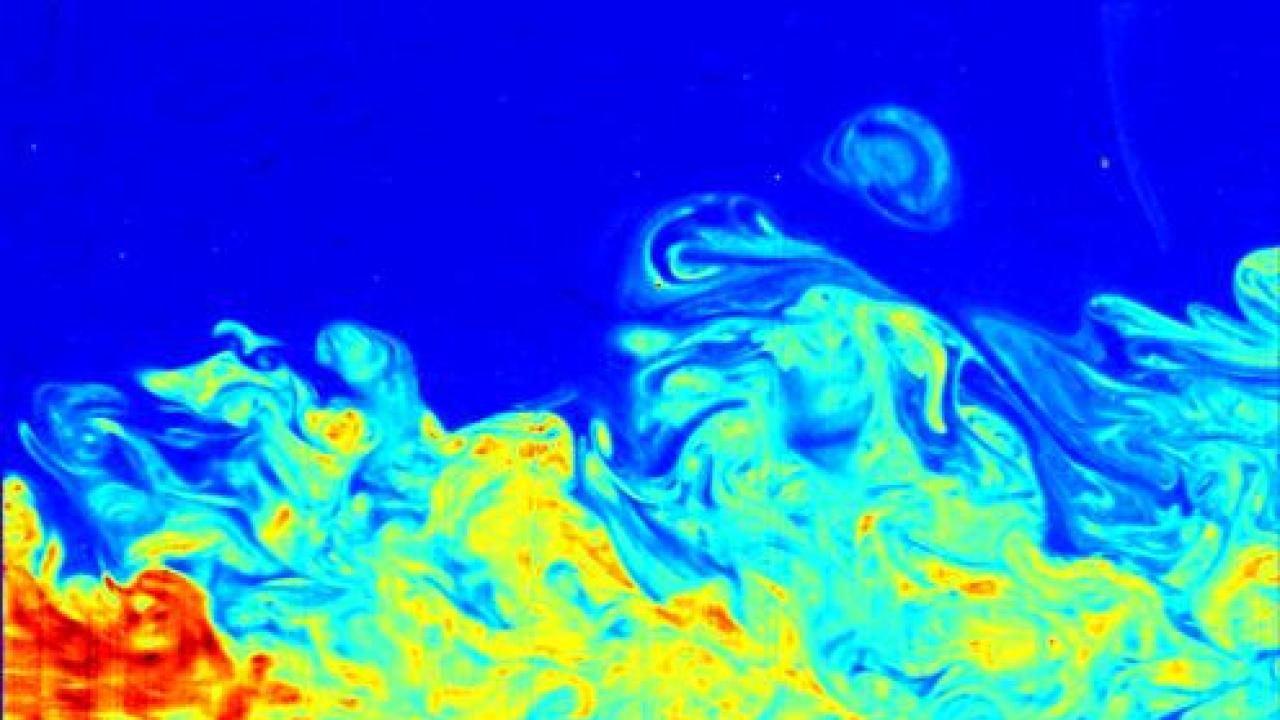
What happens when physical systems lose their balance? During three weeks at ICTP, PhD students and postdocs are finding out at the School on Non-Linear Dynamics, Dynamical Transitions and Instabilities in Classical and Quantum Systems.
The physics of chaos, turbulence, and dynamical instabilities has been explored to some extent in simple, classical systems, but is uncharted territory in many quantum systems. "We have the feeling that there's a huge unexplored area of such phenomena," said ICTP scientist and local school organizer Markus Müller.
Both theoretical and experimental non-equilibrium physics got a boost about ten years ago when the first experiments with cold atoms revealed that it was possible to test non-equilibrium quantum phenomena in the lab. Those experiments made the field into one of the hottest in physics.
"I think among all the areas of physics at the moment, this is one of the best," said Fabian Essler of Oxford University, a lecturer at the ICTP school. "The experiments are absolutely breathtaking and they are not infinitely expensive, which means there are sufficiently many groups in the world coming with a regular stream of interesting results."
Essler explained that theory and experiment in non-equilibrium physics are deeply intertwined. "Experiment always will identify for you relevant and important questions," he said. "For a theorist, this is really indispensable. You don't want to work in a vacuum and derive results which never can be tested experimentally."
The deep connection between theory and experiment is also reflected in the school's lectures, which included Essler providing theoretical background and Jörg Schmiedmayer from the Vienna University of Technology presenting experimental results. School participants found the balance helpful. "I'm a theorist, but I often do need some experimental perspective," said Analabha Roy, a researcher at the Saha Institute of Nuclear Physics in India. Postdoctoral researcher Jamir Marino of the University of Innsbruck agreed, calling Schmiedmayer's lectures "extremely inspiring."
In addition to connections between theory and experiment, the school forges new links between students and established professors. Marino and Roy found the professors to be accessible and generous with their time and feedback, while the lecturers speak highly of the level of the participants. "To my surprise, the school has been very interactive," said Paul Wiegmann of the University of Chicago, who has lectured at many ICTP schools before. "It's a hard load to teach, but it's paid back by the students' interest."
"The participation in my lectures was tremendous," Essler concurred. "There were, if anything way too many questions. I didn't get as far as I had planned. It's at the very upper limit of what you can expect in summer schools. Everybody has been saying that it's a very good crowd."
Many of the lecturers and students come from different subfields of non-equilibrium physics, and the school reflects this diversity. Essler, Wiegmann, Schmiedmayer, and the rest of the lecturers are at the top of their respective fields, giving the school a high-level perspective of the topic as a whole. "The most representative experts in all the subfields will really give you a complete overview of what is going on," Marino said. Wiegmann agreed. "The best people in a diverse area have been brought here, and I think that's an achievement of ICTP and the organizers of the school," he said.
The lecturers agree that a school covering varied topics is the best way to make students aware of the many interrelated research questions currently on scientists' minds. "For students, it's very difficult to learn about it unless it's first-hand," Wiegmann said. "I think just to take stock of where the field is and to bring in more of the young people, and there are many of them, a school is great," Essler added.
In uniting theory and experiment, leaders of the field and students, and multiple topics in non-equilibrium phenomena, Müller hopes that the school will spur future research directions in non-equilibrium physics. "By bringing these topics together and some leading people who are experts in their field but not necessarily in the others, one may generate some interesting new thoughts and ideas," he said.
It will benefit all the researchers attending the school to learn about a field which is still in the process of establishing itself. "From a theory point of view, there are many more things we don't understand than we do," Essler said. "Amongst all the questions we knew or we identified 4-5 years ago, there's a very small number we managed to completely sort out in the mean time and there's a long way to go. There's plenty of work for the new people coming in."
















